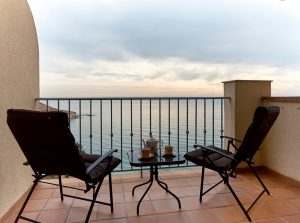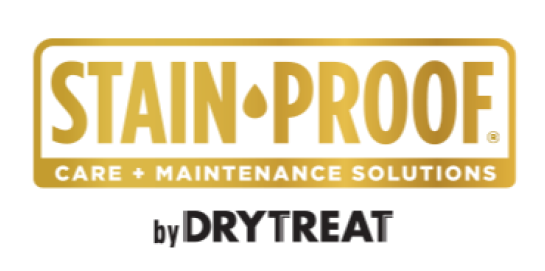Importance of waterproofing tile, keeping your outdoor living spaces water-tight.
Tiled rooftop decks are incredibly popular, for good reason. They expand living space and increase resale value while providing the homeowner hours of enjoyment in good weather. Places like Florida and coastal Eastern US have hundreds of thousands of rooftop decks on houses large and small. Keeping a waterproof deck watertight and in good shape requires knowledge and experience. When deciding what material to use to finish your rooftop deck, keep a few things in mind. Your waterproofing membrane and the system will function underneath the finish layer. When finishing a roof-deck with tile, waterproofing tile is an additional concern.
Waterproofing Tile: Tile surfaces are porous.
 Tile and mortar make for a fantastic rooftop deck flooring choice. Since tile and grout are porous materials your waterproofing underlayments need to be watertight. Water and water vapors will seep through the tile and into the membranes below more easily than they would with other types of flooring. Always know what type of flooring will be installed over the waterproofing system before you start the job. If you have questions about which waterproofing system to use, please contact us.
Tile and mortar make for a fantastic rooftop deck flooring choice. Since tile and grout are porous materials your waterproofing underlayments need to be watertight. Water and water vapors will seep through the tile and into the membranes below more easily than they would with other types of flooring. Always know what type of flooring will be installed over the waterproofing system before you start the job. If you have questions about which waterproofing system to use, please contact us.
Special membranes and bonding agents need to be used when a tile deck is installed over them. Regardless of whether the tile will be treated to be water-repellent or not, additional layers of a waterproofing membrane need to be installed. Additional layers of the membrane should also be considered for areas with very heavy rainfall and moisture. Because this is a roof deck, it is imperative that water does not seep down into the structure below.
Waterproofing Tile: When tile is applied to a rooftop deck using thinset.
The application process is standard for either cement or OSB ply floors. (Substructures). Apply the waterproofing membrane after the entire area has been cleaned and taped off. Fluid applications, sheet membranes and a combination of both are acceptable. The tile is actually laid directly over that system using a thinset method. The thinset method applies the thinnest layer of mortar to the substrate (in this case the top of your membrane) and the tile is set directly into that. There should always be a gradient toward drainage areas.
Waterproofing Tile: Sealers and water repellents.
These are the first line against too much seepage coming through the tile and mortar into the water barriers. Always make sure you use water-repellent materials designed for the area you are in Different climates need different materials according to variables such as rainfall, UV light, humidity, and others. The quality of your tile sealant is also important, always try to use US manufactured products.
Waterproofing Tile: Tile Sealants will eventually wear out, some areas faster than others.
On a roof deck, areas with high traffic or lots of furniture being moved will wear through the tile sealants more quickly than others. This is another reason you must ensure you waterproofing system is the correct grade and application level. Even the best tile sealants on the market will eventually wear down because of weather, aging, and stress. In the time it takes to re-seal the tile flooring of your roof deck, a lot of water might work its way into the waterproofing membrane. Once again, being forewarned is being forearmed. If you apply a waterproofing system with attention paid to the weather, the tile and the sealants used, you will have a superior system designed to pass the test of longevity and durability.
Find a trusted supplier with quality products.
At Pli-Dek we know waterproofing systems and sealants. We have been in the business of manufacturing, installing and guaranteeing them for over thirty-five years. When you need help from professionals who have done it all, look no further than Pli-Dek.











